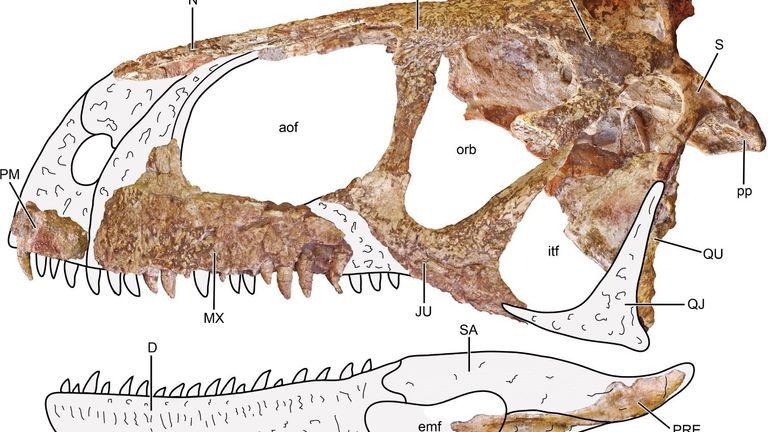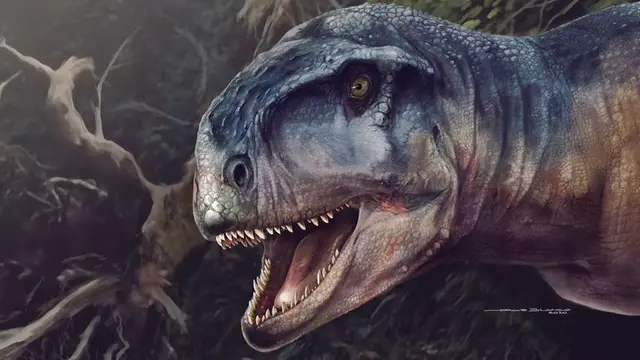A dinosaur similar to the T-Rex has been discovered in Argentina and given the menacing name "the one who causes fear".
Itlived around 80 million years ago, at the same time as the Tyrannosaurus rex in the northern hemisphere, but instead roamed Earth's southern continents.
Llukalkan aliocranianusmeasured up to five metres long and had an extremely powerful bite according to palaeontologists, using its sharp teeth and huge claws to dominate the food chain in Patagonia.
The creature's name comes from the native Mapuche for "one who causes fear" - Llukalkan, and the Latin for "different skull" - aliocranianus.

Image:Skull of Llukalkan aliocranianus. Credit: Journal of Vertebrate Paleontology
The dinosaur's strangely short skull had rough bones, indicating it had bulges and prominences on its head like modern reptiles such as iguanas.
Scientists believe it probably also had quite good hearing, similar to contemporary crocodiles, according to the research in the peer-reviewed Journal of Vertebrate Paleontology.
The fossilised remains of the beast were found at a famous fossil site near La Invernada in Argentina.
"This is a particularly important discovery because it suggests that the diversity and abundance of abelisaurids were remarkable, not only across Patagonia, but also in more local areas during the dinosaurs' twilight period", said lead author Dr Federico Gianechini, from the National University of San Luis.
Abelisauridae were a family of theropod dinosaurs averaging five to nine meters long that prowled mainly in Patagonia and other areas of the ancient southern subcontinent Gondwana - which today has split into Africa, India, Antarctica, Australia, and South America.
Although abelisaurids resembled the T-Rex in general appearance with tiny stubby arms, they had very different skulls which were unusually short and deep, often with crests, bumps and horns.
"These dinosaurs were still trying out new evolutionary pathways and rapidly diversifying right before they died out completely," said co-author Dr Ariel Mendez from the Patagonian Institute of Geology and Palaeontology.
Despite the new finding, the researchers believe there is still a lot to unearth.
"This discovery also suggests that there are likely more abelisaurid out there that we just haven't found yet, so we will be looking for other new species and a better understanding of the relationship among furilesaurs," says Dr Gianechini.
 简体中文
简体中文

